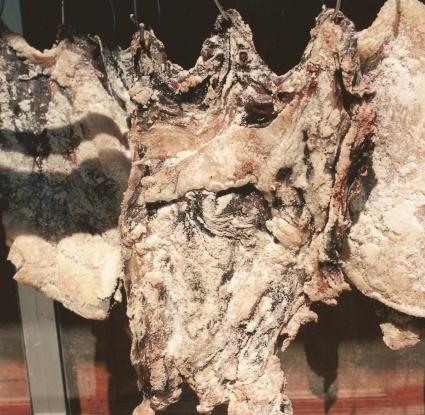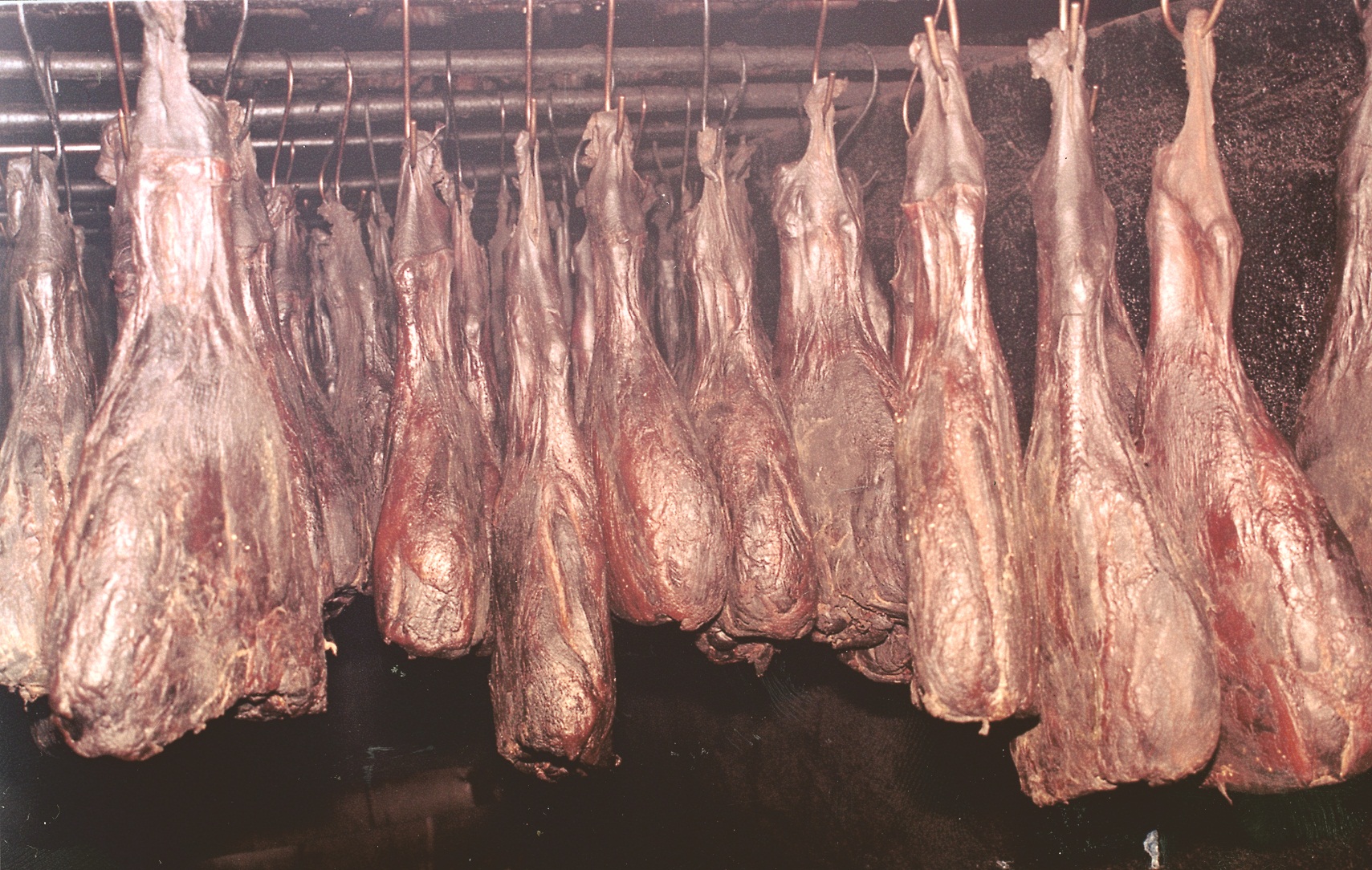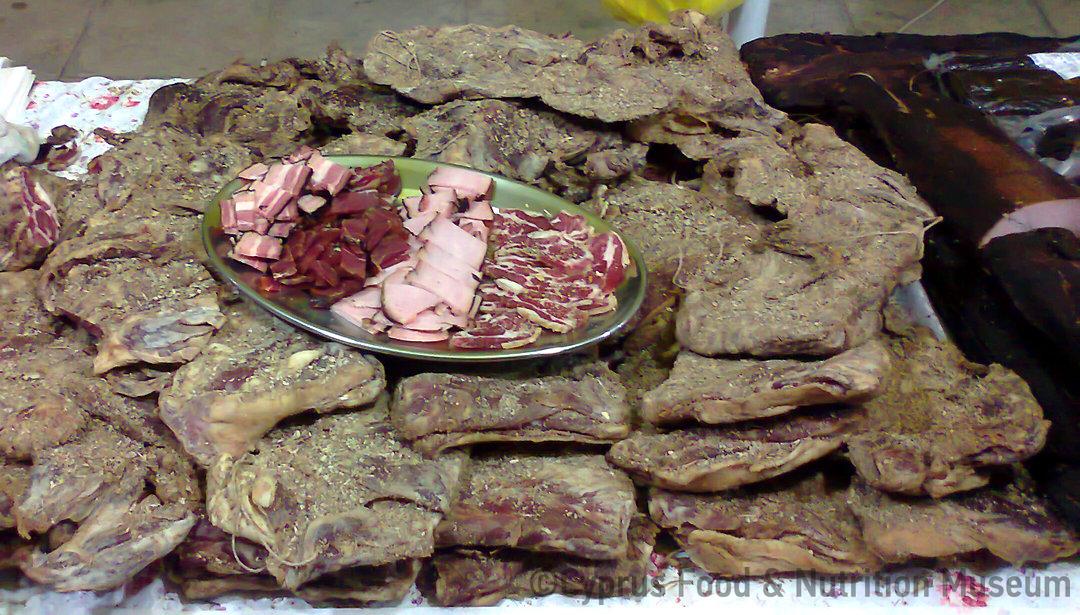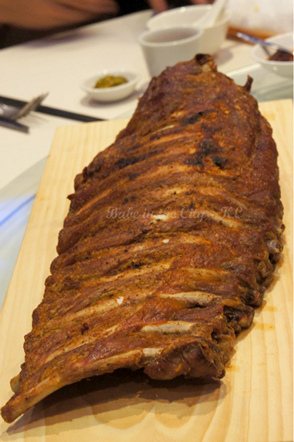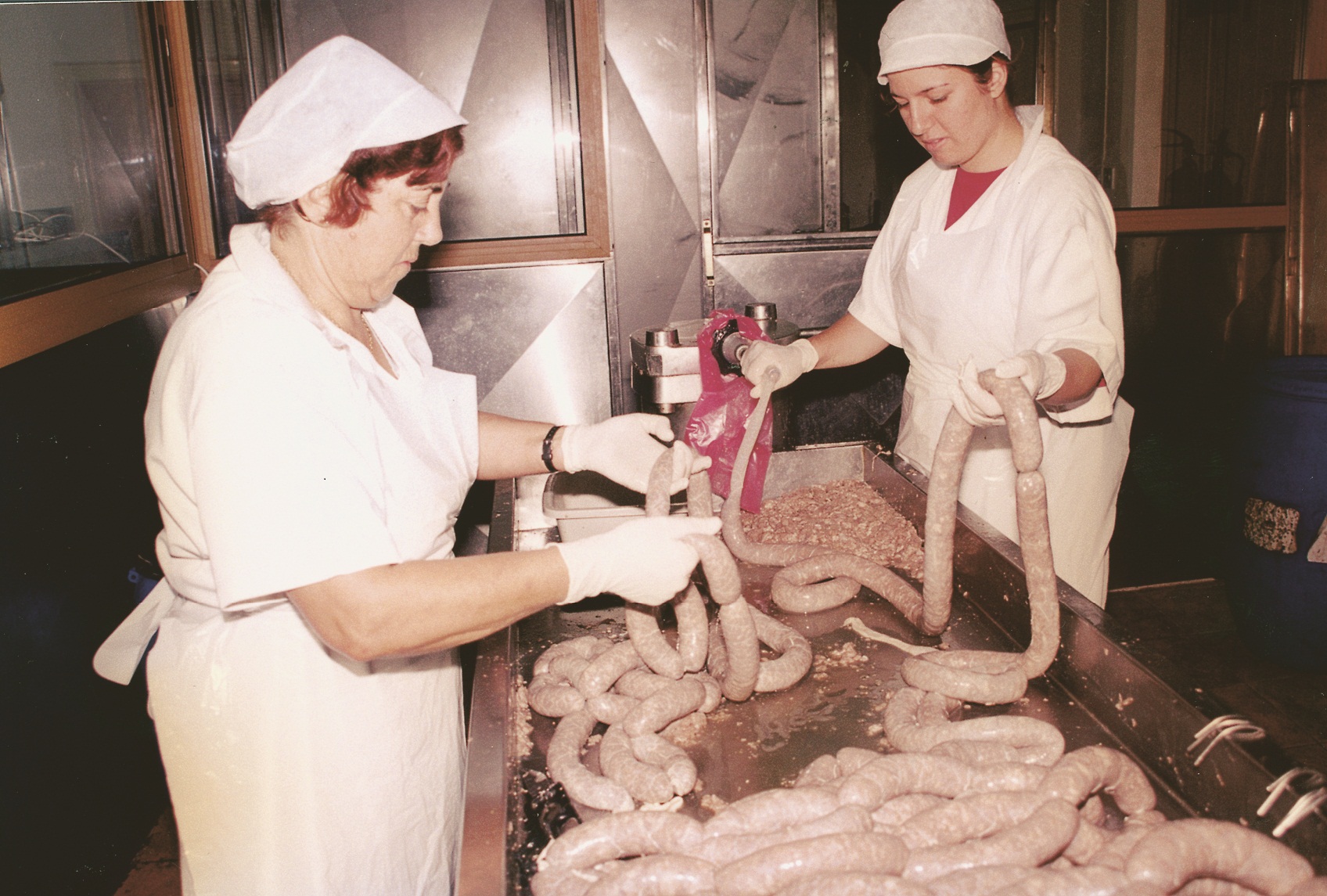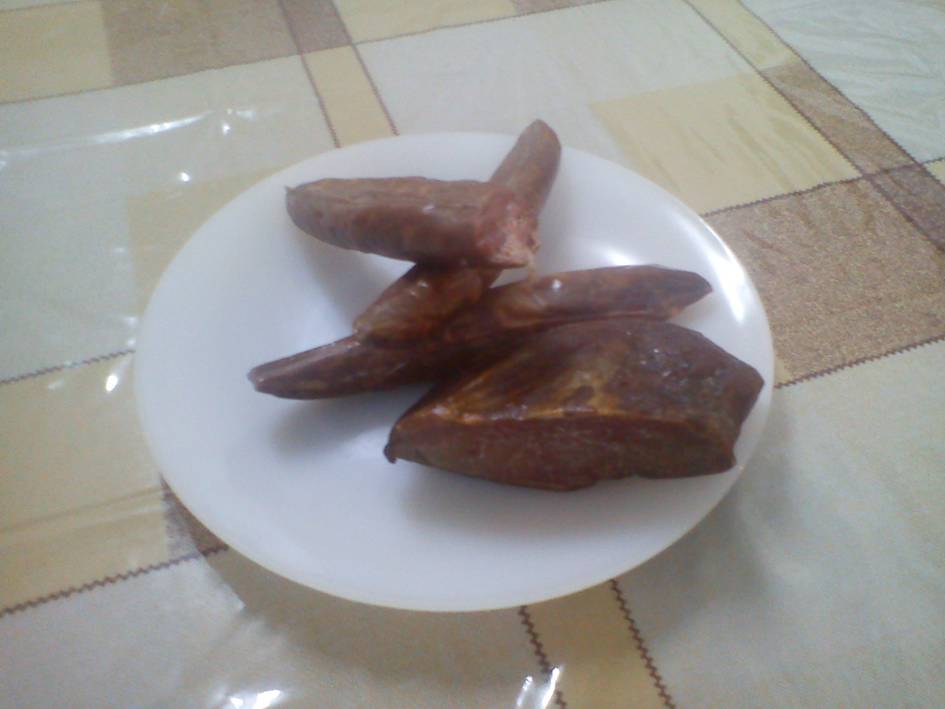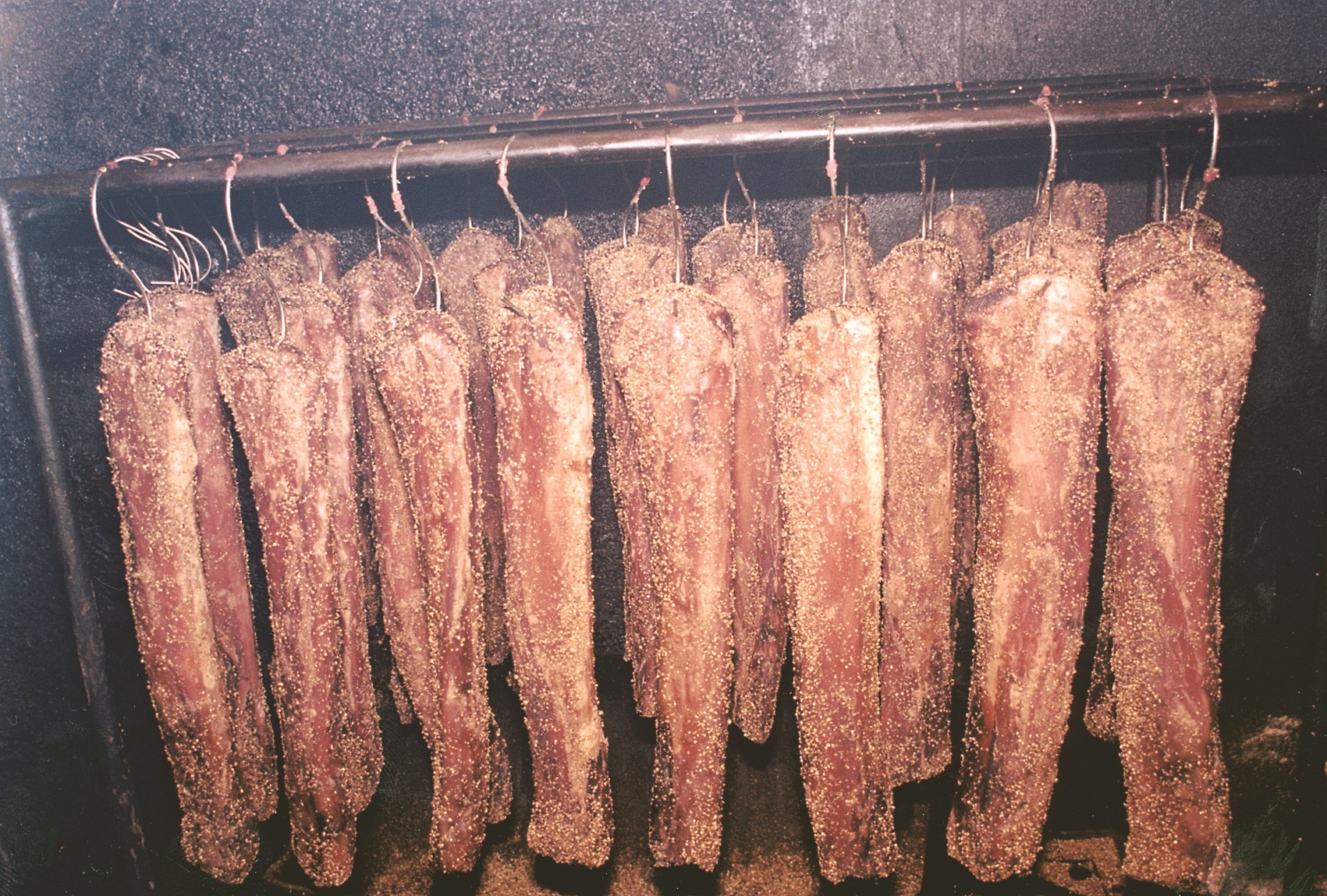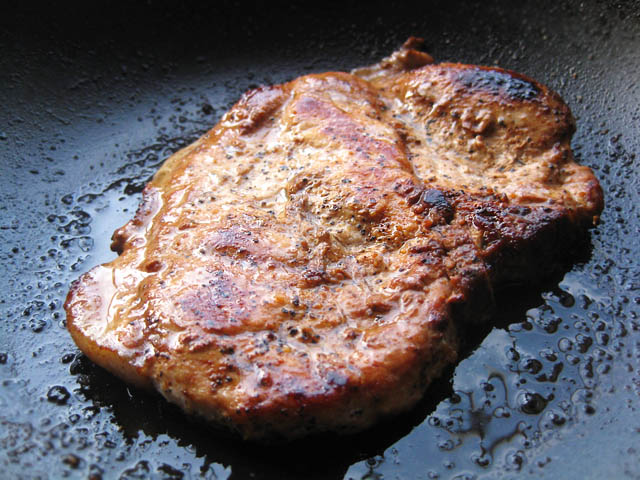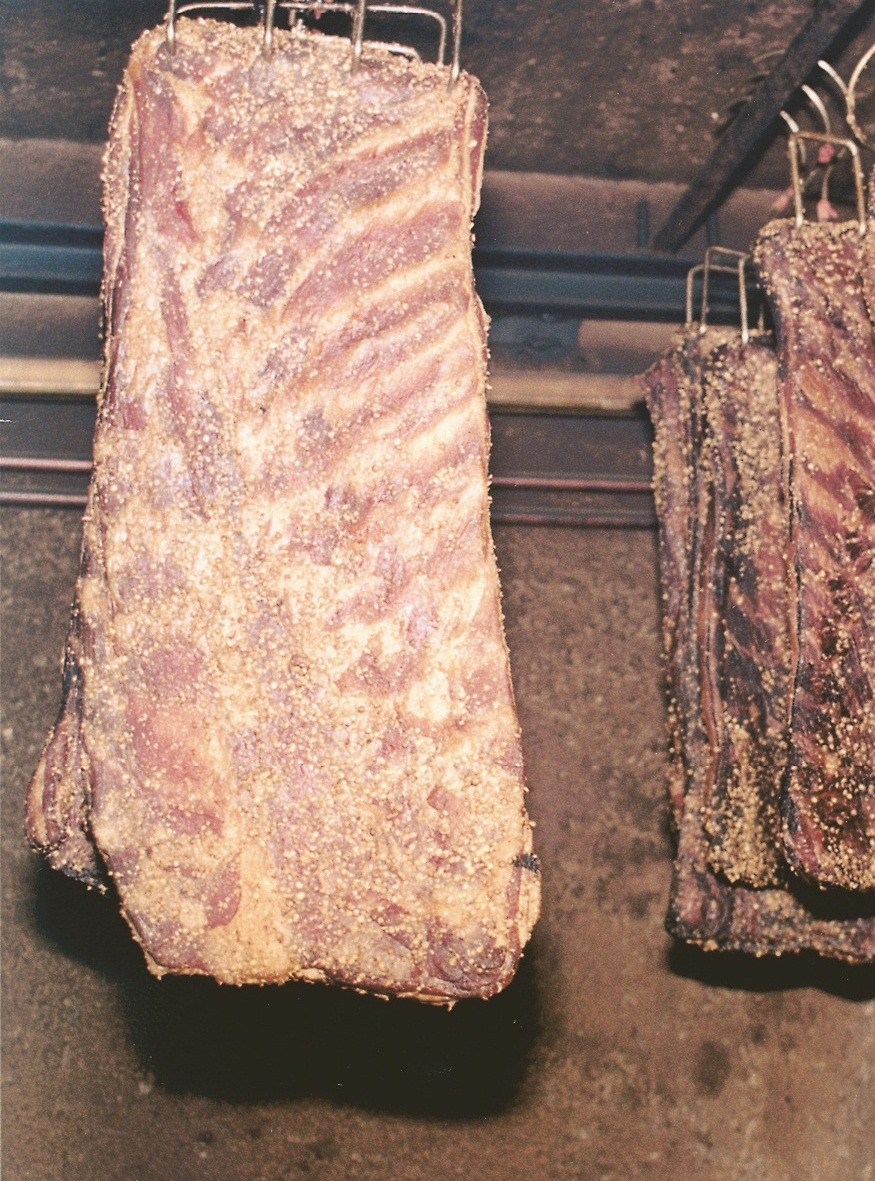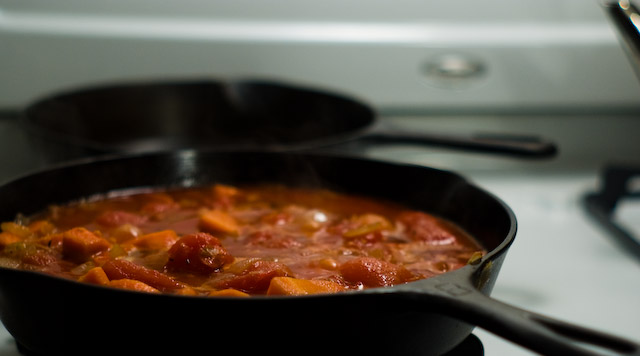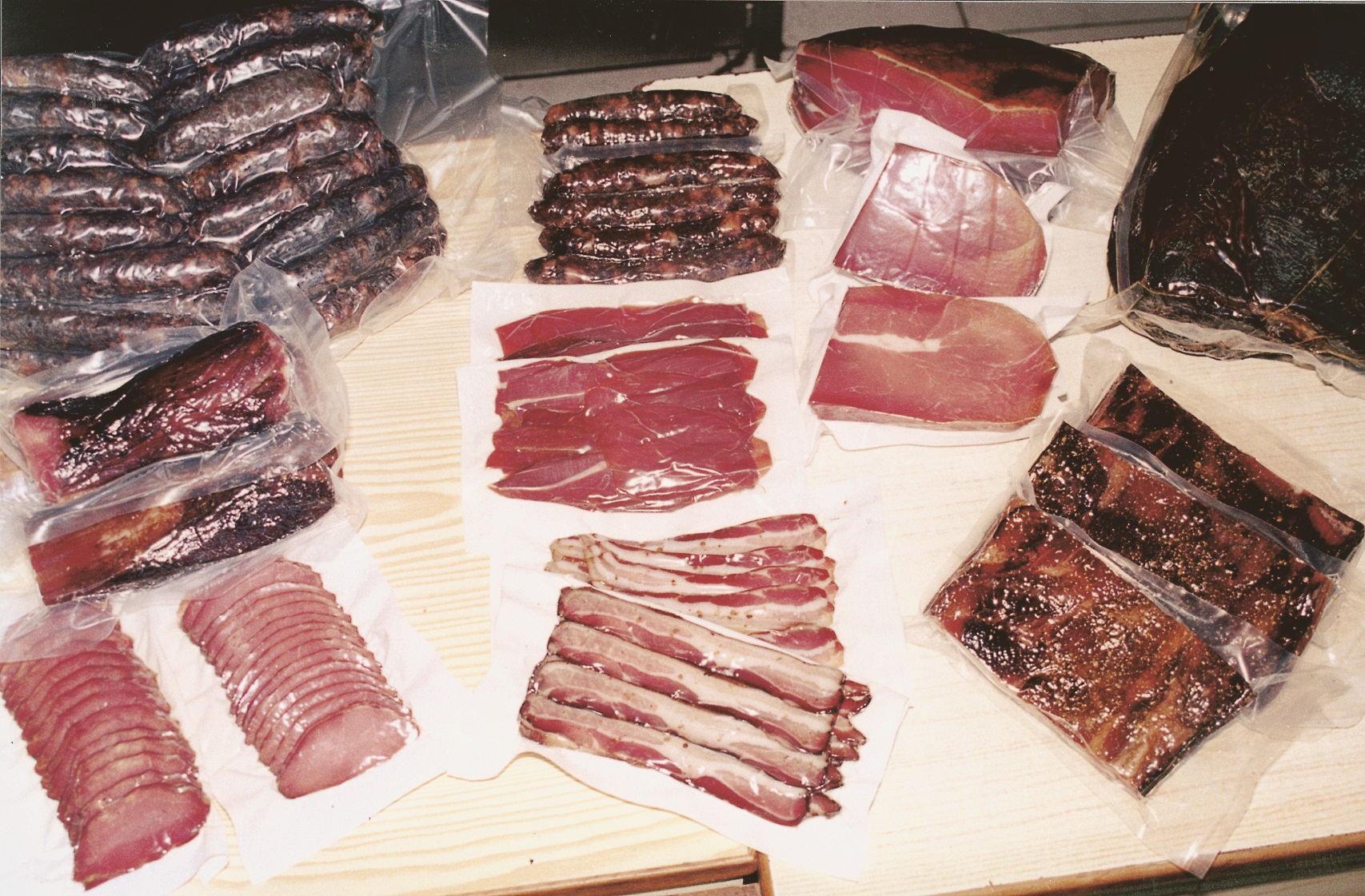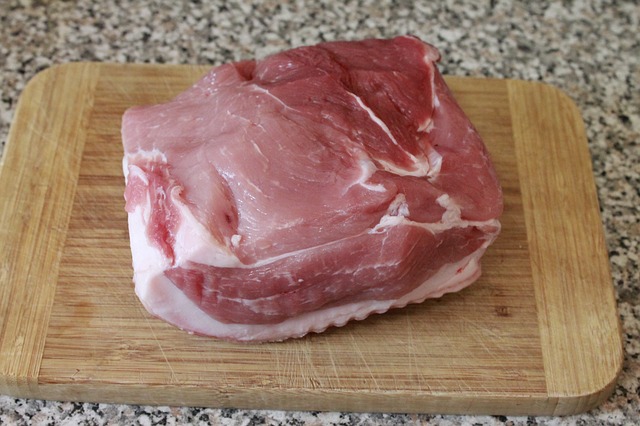Name - Recipe
Salted goat meat that has been dried in the sun.
5-6 kg of old goat meat (ribs)
about 2 kg of salt
A generous amount of oregano
Version A
Cut the meat into large pieces and debone. Sprinkle each piece with plenty of salt and place one on top of the other in a large deep bowl (the basin must be deep because it will release a lot of juice). Leave overnight to absorb the salt. On the following day, take each piece separately, grip it with hooks (to keep it open) and hang it in the sun to dry out completely. It takes about 2-3 days (depending on the season). Bring a large pot of water to a boil and dip each piece separately for about 2-3 minutes. Repeat this process for 2-3 times (change the water each time) until the meat is no longer salty. Put the meat in the air for a while to drain. Line a deep container with a white cloth and place the pieces on top of each other, after sprinkling them with plenty of oregano. Cover them with white clothing and put weights on top to straighten the meat, and leave it overnight. Hang them in the air again with hooks to drain only (not to dry out ) for about 2-3 hours. Tsamarella should be soft. (Kyperounda, see Kourri and Lazarou 2007)
Version B
Use goat meat (preferably an old goat) from which has been deboned. The meat is cut into large pieces, which are scored with a knife and sprinkled with salt. The salted pieces are pressed, placed in a basin overnight to absorb the brine and on the following day they are placed in the sun to dry for about 5-10 days, depending on the weather. The pieces are turned/moved daily to ensure to get an even amount of salt and sun. Tsamarella is repeatedly immersed in hot water for 2-3 minutes to remove the salt. Place it once again in the sun for 1 day after sprinkling it with oregano. (Kythraiotou 2013, 52)
Preserving in salt.
Drying in the sun.
Boiling.
While tsamarella is outside in the sun, it should be protected from flies.
Functional and symbolic role
Tsamarella is a way of preserving meat, since in the old days there were no refrigerators. In the old days, they used to put the thamarella in 'armaroles', small cupboards made of wooden frames and wire mesh that allowed the food inside to ventilate and to be protected from insects.
Tsamarella is considered a suitable accompaniment to zivania (Kythraiotou 2013, 47).
Additional information and bibliography
Tsamarella was traditionally prepared in the same way as apohti, the only difference being that only boneless pieces of meat were used in tsamarella (Kyprianou 1970). Moreover, tsamarella was preserved for a shorter period of time than apohti, and therefore, it was not necessary to fry it in goat fat beforehand (Neophytou 1991).
Marathasa (Kampos-Tsakistra) was famous for its tsamarella and other charcuterie. In this area there was a large number of small traders who sold the charcuterie on festivals all over Cyprus (Kythraiotou 2013, 47).
Kythraiotou, F. (2013). Gastronomic guide of Marathasa, Ministry of Education and Culture - Pedagogical Institute, Nicosia.
Kyprianou, H. (1970). Some Cypriot dishes of Tsakkistra Village, Publications of Lapithos Gymnasium, Lapithos.
Neophytou, K. (1991) 'Preservation of meat', Λαογραφική Κύπρος, 41, 63-73.
Oral testimony: See. Kourri, P. and Lazarou, S. (eds.) (2007). Traditional recipes of the village of Kyperounda, unpublished data.
Stalo Lazarou, Demetra Dimitriou, Petroula Hadjittofi

